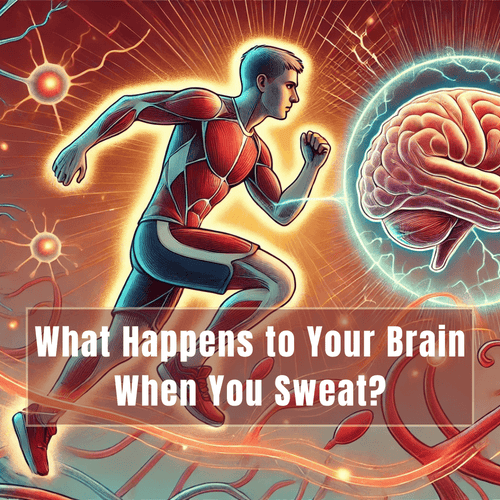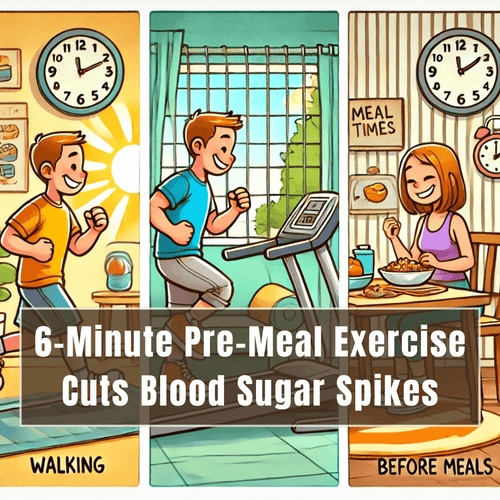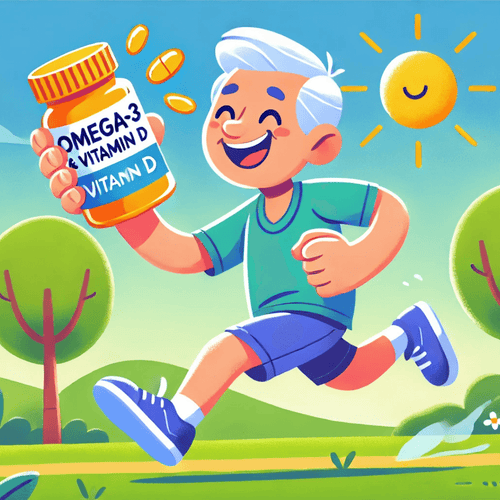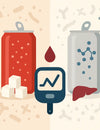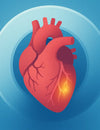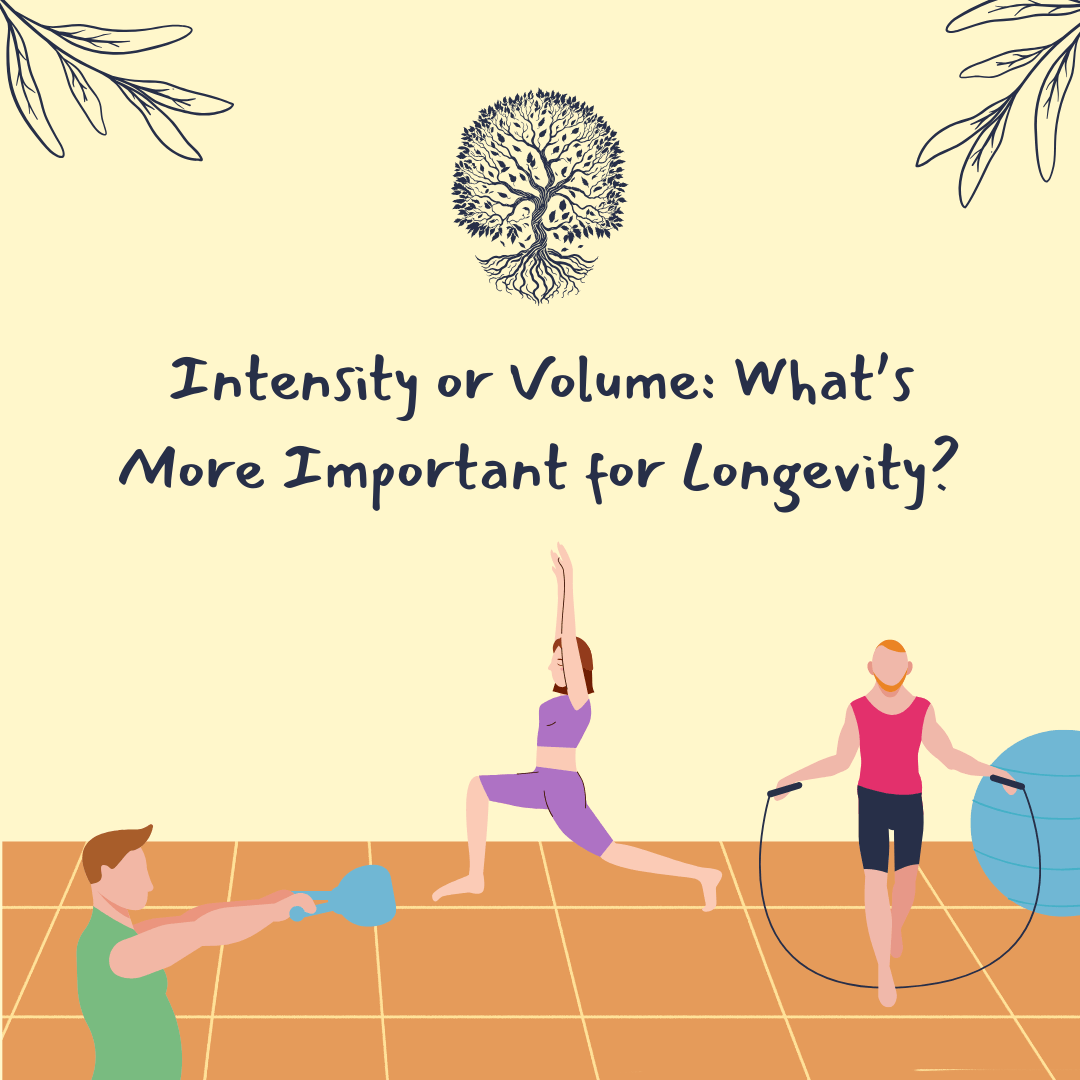
Is spending hours at the gym the only way to live longer? Not according to recent findings. The study "Intensity or Volume: The Role of Physical Activity in Longevity," led by Schwendinger et al., shows that how hard you work out might matter more than how long you work out. Specifically, higher physical activity intensity is more strongly associated with reduced risks of all-cause and cardiovascular disease (CVD) mortality. This article dives into these findings, explains why intensity counts, and provides tips on achieving the right balance in your own routine.
Table of Contents
The Study at a Glance: Intensity vs. Volume in Exercise
This research, based on data from the National Health and Nutrition Examination Survey (NHANES), analyzed over 7,000 adults with accelerometer data to see how physical activity (PA) factors like volume, intensity, and fragmentation impact mortality. Researchers found that:
- Intensity is a major predictor of reduced all-cause mortality, particularly for CVD. A 37% risk reduction was observed when activity intensity was moderate to high.
- Volume also impacts longevity, but primarily when paired with higher intensity levels.
- Fragmented exercise—or sporadic bouts of movement throughout the day—contributes less to longevity than continuous, more intense periods.
These findings suggest that integrating higher-intensity exercise may offer more protective benefits for heart health and longevity than simply increasing exercise duration.
What This Means for You
For those looking to maximize health benefits, focusing on higher-intensity, shorter workouts could be the key. Research highlights that exercising at a higher intensity is especially beneficial for the cardiovascular system, potentially reducing heart disease risk.
Why Intensity Matters More Than Volume
The researchers measured PA intensity using two metrics:
- Average Acceleration (AvAcc): A measure of the overall physical activity volume.
- Intensity Gradient (IG): A measurement of how much high-intensity activity was accumulated during the day.
While both metrics were associated with lower all-cause mortality, IG had a stronger effect on CVD outcomes. Those who regularly achieved higher levels of intensity saw significantly reduced mortality risks, with diminishing returns once a moderate threshold was reached.
In short, while volume matters, intensity is the primary driver of health benefits in this context. This may be due to physiological responses in the cardiovascular system. For example, high-intensity exercise promotes greater oxygen uptake, improves heart function, and stimulates cardiovascular adaptations that enhance longevity.
Incorporating High-Intensity Activity: Practical Tips
If you’re looking to add high-intensity activity to your day without committing extra hours, here are a few simple strategies:
- Quick Sprints: Instead of a long walk, try a few minutes of fast walking or short sprints.
- Interval Training: Shift to high-intensity interval training (HIIT) for a condensed workout that has been shown to yield equivalent benefits in a fraction of the time.
- Workplace Exercises: If your schedule is tight, consider short, intense bursts of exercise a few times a day. Our Exercise for Maximum Benefits Program offers routines designed to fit seamlessly into busy schedules.
Comparing Study Insights with Practical Exercise Programs
If you’re intrigued by the science of longevity and exercise, you may find these resources on our blog useful:
- High-Intensity Interval Training and Cognition: Explore how intense bursts of exercise can improve brain health.
- Anti-Aging Benefits of High-Intensity Training: Learn how short, intense exercises can reverse biological aging markers.
A Quick Look at the Benefits of High-Intensity Activity
Studies have shown that high-intensity exercise can help reduce biological age, improve heart health, and enhance brain function. Regular intense activity has been linked to:
- Lower biological age: Just a few minutes of intense exercise, several times a week, has been shown to decrease biological markers of aging.
- Better heart health: Short bursts of activity reduce cardiovascular stiffness and improve the heart’s ability to pump blood efficiently.
- Enhanced cognitive performance: Intense exercise has been linked to improved cognitive skills, such as reaction time and memory.
Detailed Research Breakdown: Intensity vs. Volume for Longevity
1. Research Goals and Scope
The study aimed to understand how physical activity (PA) characteristics like volume, intensity, duration, and fragmentation affect all-cause mortality and cardiovascular disease (CVD) mortality. Using data from the National Health and Nutrition Examination Survey (NHANES) for 2011–2014, the study measured activity in over 7,500 adults aged 20+ using accelerometers.
Key PA metrics included:
- Average Acceleration (AvAcc): A proxy for PA volume.
- Intensity Gradient (IG): Reflects the intensity distribution of daily PA.
- Total PA (TPA): The total time spent in activity over the day.
2. Primary Findings
The research highlighted two main findings regarding how PA influences mortality:
- Intensity as a Key Factor: Higher-intensity PA correlated with a greater reduction in all-cause and CVD mortality. The IG values reflected this association clearly, showing significant decreases in mortality risk with moderate-to-high activity intensities, especially for CVD.
- Volume as a Secondary Factor: PA volume, while still beneficial, had a less pronounced impact on reducing mortality than intensity. In fact, risk reductions plateaued at around 35–45 mg for AvAcc and -2.7 to -2.5 for IG.
3. Dose-Response Relationship
The study mapped a curvilinear, inverse dose-response relationship between PA intensity/volume and mortality. The hazard ratios (HRs) reveal:
- For IG (Intensity Gradient): A 37.1% reduction in all-cause mortality risk when moving from the 25th to 50th percentile and a 41% reduction for CVD mortality.
- For AvAcc (Average Acceleration): A 14.4% reduction in all-cause mortality from the 25th to 50th percentile, with benefits stabilizing beyond this point.
The dose-response curve for IG and AvAcc showed that benefits plateaued, with no additional mortality risk reduction past a certain intensity and volume threshold.
4. Age- and Sex-Specific Trends
Age-specific centile curves showed:
- A decline in intensity and volume with age: Older adults generally had lower PA metrics.
- Sex differences in PA intensity: Men generally had slightly lower IG scores than women, possibly due to different activity patterns or lifestyle choices.
5. Activity Fragmentation and Mortality
To capture activity fragmentation, the study used metrics like the MXRATIO (the ratio of intense continuous PA to fragmented PA). A key finding was that continuous PA bouts, even as short as 5 minutes, were more effective in reducing mortality risk than sporadic activity throughout the day. For example:
- An M15RATIO of 1 (indicating less fragmented activity) was associated with a 72% lower all-cause mortality risk.
Takeaway: High-Intensity for Longevity
The science points to one key takeaway: While regular movement is essential, incorporating intense, short bursts of physical activity may give you the best return on your investment in terms of longevity. For those balancing a hectic lifestyle, interval training offers a time-efficient way to boost heart health, keep age-related diseases at bay, and live longer.
So, ready to start? Explore our free guide on quick, high-intensity exercises that can help you reap these science-backed benefits without a major time commitment.
Reference
Schwendinger F, Infanger D, Lichtenstein E, Hinrichs T, Knaier R, Rowlands AV, Schmidt-Trucksäss A. Intensity or volume: the role of physical activity in longevity. Eur J Prev Cardiol. 2024 Sep 14:zwae295.



